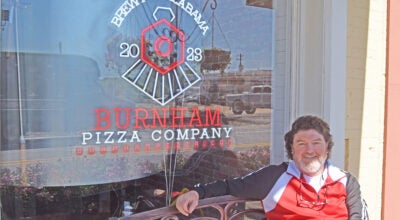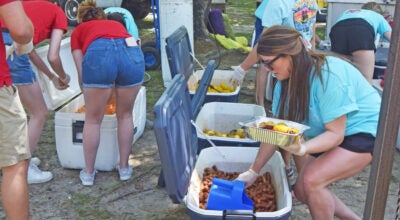Cooler summer temps make record book
Published 2:37 pm Thursday, September 5, 2013
The temperatures may still be hot, but the summer of 2013 will go into the record books as one of the coolest summers in the state in the 131-year record. This summer, Alabama averaged high temperatures almost 2 degrees lower than normal seasonal temperatures, according to climatology experts in the state.
Dr. John Christy, an Alabama State climatologist, said the records seen this year are certainly worth paying attention to in order to predict future weather events.
This years record came after officials kept statistics for three months and evaluated the findings, Christy said. For the three months studied, no station in Alabama hit 100 degrees. If that record continues to stand, the 2013 summer will be only the fourth time that has happened since 1883. Other years helping to set records were 1965, 1994 and 2001.
Although the state didn’t see any 100-degree temperatures, it doesn’t mean it won’t happen somewhere in the state.
For climate records, experts use the meteorological summer — June, July and August — rather than the solar summer, which this year ends on Sept. 22.
“Looking at preliminary temperature data from the areas around each of the state’s four largest cities, this should be the fifth coolest summer on record,” Christy said. “Overall, this summer was both cool and wet, although the state generally warmed and dried as August came to a close. Statewide, 46 local daily climate records were set for the coolest daytime high temperatures just in August. During the cool spell beginning on the evening of August 14 and ending in early afternoon of August 19, Huntsville experienced an incredible 117 consecutive hours below 80 degrees.”
Christy also noted that information included a statewide study, rain average for August should be about one inch above normal, although (as always) averages can be deceiving — especially for rainfall. Selma saw its wettest August (11.26 inches) in a climate record that began in 1895. At the same time, several stations got less than two inches of rain for the month including Scottsboro (1.05 inches), Decatur (1.54 inches) and Russellville (1.80 inches).
Certain crops, such as corn, benefited from the weather, and the average Alabamian’s utility bill for electricity and water was probably noticeably lower this year, Christy said.
“Several people have asked if the cool summer will have any influence on or provide any hints about temperatures this winter,” Christy said. “Sorry, but no. The fact we had a cool summer doesn’t help in predicting the coming winter’s average conditions. A quick check shows that there is no relationship between summer’s average temperature and that of the following winter.
“We have also had some folks speculating on what this cooler than usual summer might mean for some of the long-term trends. In the 131-year record, however, the cool summer of 2013 fits the pattern we’ve seen. The 10 coolest summers in that record have all occurred since 1960.
“However, in climate, what goes up must come down or, in this case, what goes down comes back up. At some point I would expect to see the trend slowly turn to warming for a while to balance out the past 50 years of relatively cool weather. So, it’s probably too soon to fill in the backyard pool just yet.”
In terms of history, 1967 shows up in most Alabama weather stations as having the coolest summer since reliable weather record keeping started in 1883. Other summers on the cool end of the record include 1997, 1992, 1961, 1989, 1994, 2003, 2004 and, now, 2013, Christy said.
The 131-year average summer daytime high temperatures for the four regions are Mobile – 90.8 degrees; Montgomery – 92.7 degrees; Birmingham – 90.1 degrees and Huntsville – 90.7 degrees.
In calculating the average temperatures for each region, the climatologist’s office uses only daytime high temperature readings for stations (about 30 per region) within a 50-mile radius of each city center. The Mobile region has a 90-mile radius to compensate for there being fewer nearby stations (no weather stations in the Gulf of Mexico) and for there being fewer early stations near the city. Only daytime highs are used because nighttime low temperatures at some stations have slowly been contaminated by the growth of urban areas around those stations. The data were combined in a process that takes into account station moves and instrument changes, Christy said.





